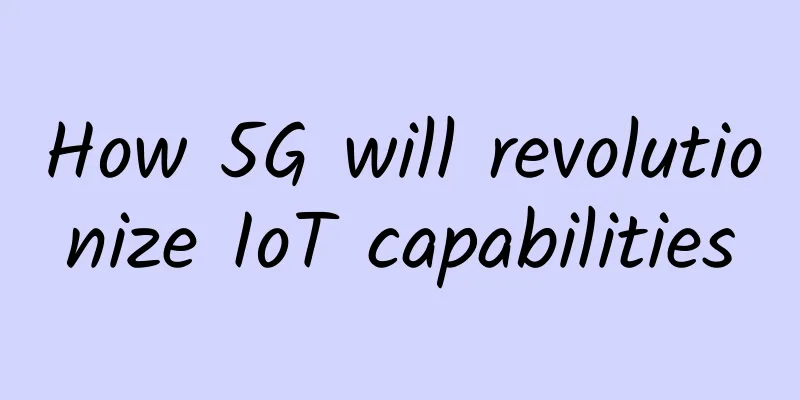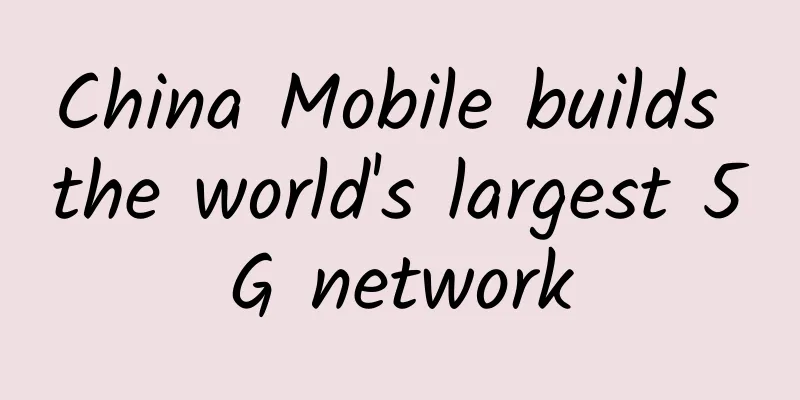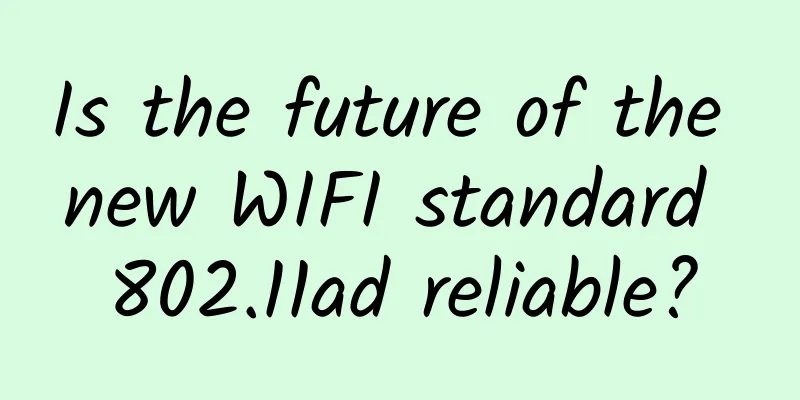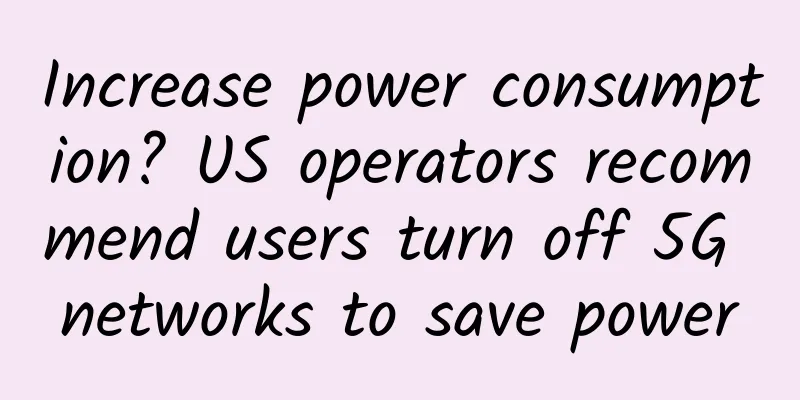How 5G will revolutionize IoT capabilities

|
In India, the advent of 5G has not only accelerated digitization at the grassroots level, but also provided consumers with the opportunity to gain economies of scale. A recent study conducted by the GSM Association showed that 5G has the potential to contribute $455 billion to the Indian economy between 2023 and 2040. Its integration is expected to generate new value through "super connectivity" and become a driving force for digital transformation in various industries in India. Key industries such as healthcare, manufacturing, infrastructure, retail, energy and utilities are expected to benefit from the widespread deployment of 5G technology. 5G is a business driver As customers increasingly expect real-time and personalized interactions, 5G can provide the foundation for meeting customer experience demands in competitive industries. In addition, it has the potential to significantly accelerate technological advancement. The combination of 5G and intelligent automation can introduce innovative solutions that support equipment management, monitoring, and maintenance. Industries such as manufacturing, construction, transportation, aviation, healthcare, logistics, banking, telecommunications, media and entertainment, and wearable electronics will benefit greatly from the reliable, fast, and secure connections provided by 5G. With its low latency, companies can even flexibly move part of their operations to secondary cities or shared infrastructure to suit their economic needs. The convergence of 5G and the Internet of Things will play a key role in driving the Industrial 4.0 revolution. Enhanced IoT capabilities Recognizing the mission-critical nature of IoT, a reliable and stable network is essential, as poorly performing networks can incur significant costs to businesses. This is essential for linking devices, such as surveillance systems that rely on real-time updates, such as locks and security cameras. 5G provides a faster communication channel, reaching up to several gigabits per second. As a result, devices can better coordinate and complete tasks. Due to its large bandwidth, it is possible to connect to many devices while maintaining quality. The implementation of 5G provides IoT service providers with a competitive advantage in providing a seamless user experience. Today, numerous organizations across industries are considering IoT as a solution in conjunction with 5G, from data-driven traffic control systems to energy management and even smart waste management. According to Data from Insights, the 5G IoT market is expected to grow at a CAGR of 47.6% to reach $17.68 billion from 2023 to 2030. Some notable use cases include smart cities, autonomous vehicles, medical applications, surveillance, public safety, immersive e-commerce, broadcasting, and OTT entertainment. How can the integration of 5G and IoT improve business outcomes? Asia Pacific is expected to be the second fastest growing center for 5G networks, accounting for about 10% of the global user base. This revolutionary advancement in the customer sector will also go beyond the industrial sector, driving the widespread adoption of 5G in IoT devices. According to an article in The Times of India, an estimated 500 billion IoT devices will be integrated with 5G technology in the near future. This number includes sensors, actuators, scanners, and medical devices, among others, providing a plethora of options for all sectors to integrate and leverage. In the healthcare industry, the advent of 5G and IoT can enable remote monitoring and diagnosis of patients, significantly improving the quality of care and reducing the need for in-person doctor visits. Similarly, in the retail industry, 5G-enabled IoT devices can provide a personalized customer experience and improve inventory management, which can help increase sales and improve customer loyalty. Furthermore, the integration of 5G and IoT has the potential to empower new business models and unlock revenue streams. By enabling businesses to collect and analyze large amounts of data simultaneously, this integration can provide a deeper understanding of customer behaviors and preferences, facilitate the development of new products and services, and allow for personalized experiences tailored to individual needs. The possibilities are endless. Additional layer of security With the stable and reliable connection level of the dedicated 5G framework, enterprises can establish more efficient workflows. Unlike Wi-Fi, dedicated 5G networks provide enhanced security and provide a basic layer of protection. Dedicated 5G networks strengthen network endpoints and ensure secure data transmission through features such as hardware security modules, key management services, and security components. The combination of reliable connectivity and advanced security enables enterprises to optimize workflows while protecting sensitive information. Common challenges and solutions While 5G promises to revolutionize digital transformation, it is also important to address the vulnerabilities it brings. According to a 2021 AT&T survey of 1,000 security practitioners worldwide, only 9% expressed confidence in their 5G security posture. The interconnectedness of IoT exposes it to security vulnerabilities. Protecting data and devices requires implementing encryption, authentication, and access control mechanisms. Another challenge is the huge investment required to deploy 5G and IoT infrastructure. Cost-effective solutions include leveraging cloud-based IoT platforms and partnering with efficient service providers. To fully leverage the benefits of 5G and IoT, it is critical to upskill your workforce. Best practices include employee training and education, outsourcing to experts, and working with industry groups to exchange information and drive innovation and development. The impact of 5G on the Internet of Things is revolutionary, and the convergence of these technologies holds great promise. Looking ahead, the arrival of 6G technology is inevitable, offering faster speeds, lower latency, and more advanced capabilities. 6G will usher in a new era of data technology, building on the foundation laid by 5G. |
<<: How does network automation simplify network operations?
>>: Home Broadband IPv6 Address Allocation Revealed
Recommend
Hosteons: AMD Ryzen CPU + NVMe high-performance VPS is available starting at $24 per year
Hosteons is a foreign VPS hosting company founded...
Tencent Cloud Tiger Year Rewards: 2C2G4M cloud server for 5 years for only 330 yuan, Shanghai/Guangzhou/Beijing/Nanjing/Chengdu data centers available
In addition to the New Year purchasing activities...
iONcloud New Year 20% off, San Jose/Los Angeles/Dallas/Honolulu data centers, Linux/Windows options
iONcloud has released a special offer for the Yea...
Huawei Vice Chairman Hu Houkun: Crossing the business chasm and creating new 5G value
During the 2020 Global Mobile Broadband Forum, Hu...
[Closed] Arkecx 40% off, Hong Kong/Taiwan/Japan/Korea/USA etc. starting from $72/year
[Updated in August 2023] Please note that the off...
The human resources industry embraces electronic contracts and explores the path of exponential organizational innovation
[51CTO.com original article] On November 26, HRA ...
TCP
[[381851]] This article is reprinted from the WeC...
The ultimate competition, the battle of the strong--Kunpeng Application Innovation Competition 2020. The Zhejiang Division Finals was successfully held
[51CTO.com original article] On August 21, the fi...
IDC: Global Enterprise WLAN Market Recovered in the Third Quarter with a Growth of 7.4%
According to IDC's Global WLAN Quarterly Trac...
TCP three-way handshake and four-way wave and 11 states
[[331585]] Source: 22j.co/buCw Three-way handshak...
Industrial Ethernet Market Expected to Exceed $350 Billion by 2032
The Industrial Ethernet market will grow from a c...
A brief analysis of the application of NAT technology in cloud gateway
Labs Guide With the increase of network applicati...
Jingwen Internet: Japan VPS free upgrade package, Japan server free upgrade 100M bandwidth, recharge 1000 and get 300 yuan
The last time I shared information about JWDNS wa...
Understanding TCP three-handshake, four-handshake and Java stack analysis to source code from an online failure
Introduction: Introduction to production failure ...
BandwagonHost has opened a new data center in Osaka, Japan. It can be interchanged with DC6 (CN2 GIA-E) with a 10% discount.
The latest news is that BandwagonHost has opened ...









